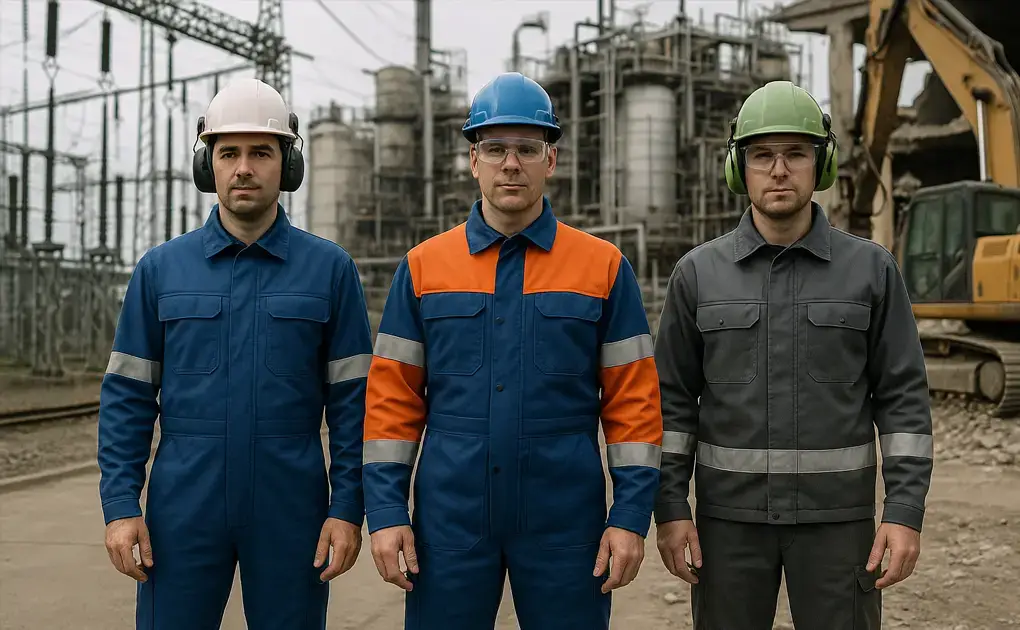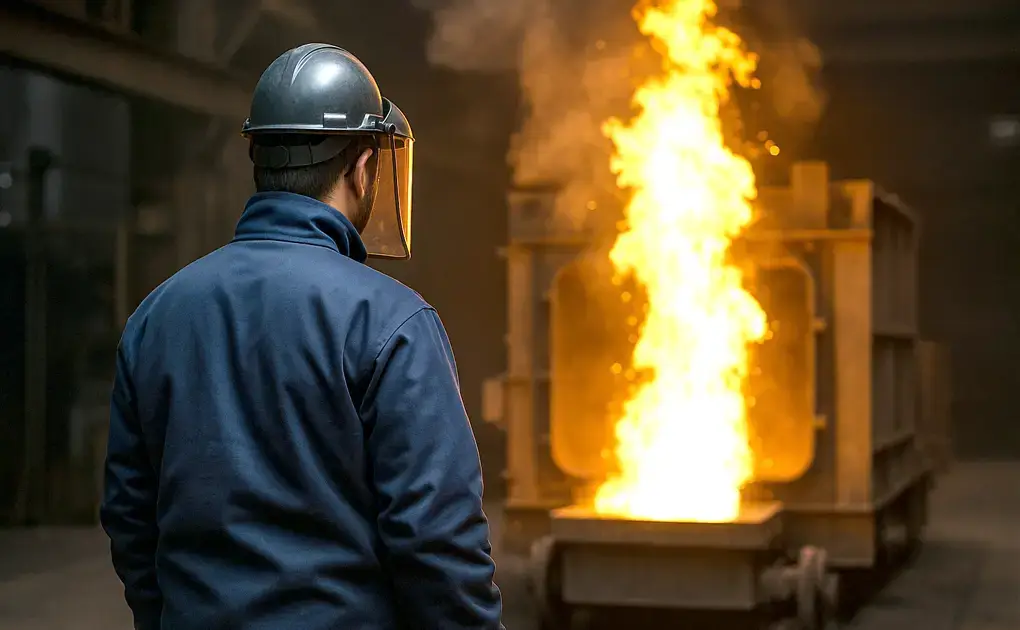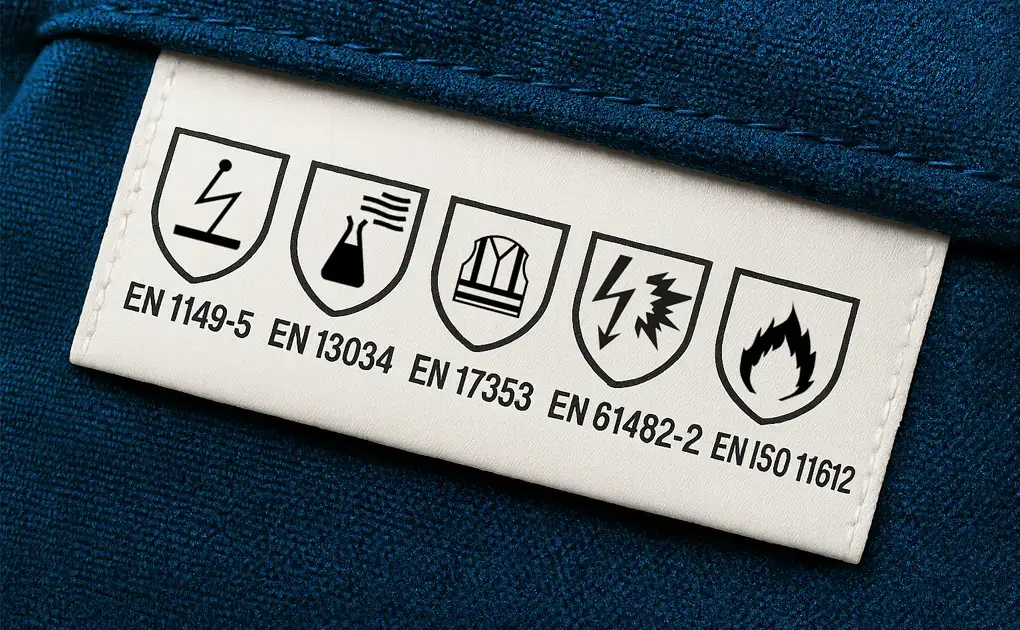
A comparison of multi-standard clothing: why not every combination protects in the same way
The morning starts like any other
The fitter climbs into the cherry picker, the ground is still damp from the night rain. Suddenly the electrics go haywire, a spark, an electric arc - just a fraction of a second, but enough to change everything. Fortunately, he is wearing the right clothing: flame-retardant, anti-static, visible - certified for this very moment. But what if not? What if the standard on the label is correct, but the protective effect is not effective in an emergency?
Multi-standard clothing only provides real protection if it is correctly combined, tested and worn. Because PPE is not a label - it's a responsibility.
What does "multinorm" actually mean?
The term "multinorm" is not legally defined - it is a practical collective term for clothing that provides protection across multiple standards. This is precisely why it is important not to rely on the label alone, but on the actual protective effect.
Multinorm clothing is therefore protective clothing that fulfils several standards at the same time - for example against heat, flames, chemicals or electric arcs. It is used wherever employees are exposed to several hazards at the same time - for example in the energy supply industry, in chemical plants, during dismantling or in road construction.
Why multi-standard workwear is more than just a collection of standards
Multi-standard workwear only works properly if the combination of protective functions are coordinated. It is not enough to combine several certifications on one item of clothing - they must also complement each other in practice.
Example: Multinorm against flame, chemicals & electricity
A protective suit that is certified against heat (EN 11612), chemical splashes (EN 13034) and electric arcs (EN 61482-1-2) places high demands on the material. This can lead to conflicting objectives: A chemical-repellent impregnation can reduce the flame-retardant effect. However, a fabric that is intended to dissipate electricity must not have a conductive surface.
An important aspect here is also the distinction between primary and secondary flame-retardant (FR) clothing.
- Primary FR clothing is designed to provide protection against flames, heat or electric arcs on its own.
- Secondary FR clothing is used in addition - for example as chemical protection - and must not impair the protective effect of the primary layer.
Only through precise material selection and tested combinations can real protection be guaranteed.

What are the most important multi-standards?
Multi-standard clothing protects against a wide range of risks that can occur simultaneously in many areas of work. Their strength lies in the combination of certified protective functions - tailored to real working conditions.
Typical hazards are:
1. Open flames and thermal radiation
- covered by EN ISO 11612 (protection against heat and flames)
2. Static charge and flashover
- regulated in EN 1149-5 (electrostatic properties)
3. Loss of visibility in poor weather conditions or in the dark
- covered by EN ISO 20471 (high-visibility clothing)
4. Arc discharge during electrical work
- standardised via IEC 61482-2 (arc protection)
5. Brief contact with chemical splashes
- covered by EN 13034 Type 6 (limited protection against liquid chemicals)
6. Weather influences such as wind and rain
- protected by EN 343 (weather protective clothing)
7. Ergonomic stresses
- protected by EN 14404 (knee protection for working in a kneeling position)
The challenge is to combine all of these protection requirements in one garment - without compromising on mobility, comfort or practicality.

Typical misconceptions in procurement
In procurement practice, there are persistent assumptions that quickly relativise the actual protective value of multi-standard clothing. One of the most common misconceptions is: the more standards, the better. However, protective clothing that can do a little bit of everything does not really protect anything. The decisive factor is what is required for the specific application - not how many symbols are on the label.
Many people ask themselves: Isn't multinorm clothing totally uncomfortable?
Modern multinorm clothing has long combined certified protection with high ergonomics, breathability and a design suitable for everyday use. The idea that multinorm is only intended for electrical companies is also a myth: today, dismantling, utilities, industry and construction also require multifunctional protection.
Whoever is procuring clothing should not just look at certificates. Care properties, durability and frequency of use are just as important as the question of whether the clothing is accepted and worn at all. Because only worn PPE protects.
Precise protection instead of standard overload
Multi-standard clothing often suggests maximum safety - but more is not always better. Clothing that is certified for as many standards as possible can quickly become a burden in everyday working life. It is often heavier, warmer and restricts freedom of movement.
A good protection concept is therefore not based on the label, but on the actual hazard. The risk assessment defines which protective functions are actually necessary. Anything that goes beyond this will, in case of doubt, bring more disadvantages than benefits.
The goal is clear: as much protection as necessary, as few restrictions as possible. Only if protective clothing remains functional will it be worn consistently in everyday life - and fulfil its purpose.
Multinorm in practice - what really matters
Different areas of application, different requirements
- Dismantling: Flame and particle protection, but also freedom of movement and heat tolerance are crucial.
- Energy supply: Focus on arc protection, often combined with warning protection.
- Chemical plants: Chemical splashes, flames and antistatic properties must come together.
- Road construction / traffic: Visibility combined with heat and weather protection.
What becomes apparent: Multinorm is not a universal solution, but a customised protection strategy. The best solutions are the result of advice, experience and practical relevance.
What safety officers and purchasers should really look out for in multinorm clothing
Multinorm clothing is not a fashion add-on, but a safety-related decision. It is not enough for a garment to fulfil several standards. The decisive factor is how reliably and practically the protective functions work in combination.
These aspects are particularly important:
Check certifications: Only clothing with valid testing in accordance with the current standard - for example EN ISO 11612:2015 - offers the necessary legal certainty. Pay attention to the exact standard labelling directly on the label.
Check the protective effects: Not every multi-standard combination automatically offers higher protection. The decisive factor is whether the different functions influence each other. This applies in particular to protection against heat, flame or arc faults.
Request technical performance certificates: Ask specifically for values such as the ATPV (Arc Thermal Performance Value) for arc protection or for documented wearer tests.
Consider wearing comfort: Personal protective equipment must not only fit, it must also be comfortable to wear. If an item of clothing is uncomfortable or impractical, it is often avoided in everyday life. Multi-layer systems such as under and over jackets must therefore be functionally coordinated.
Ensure care and training: Multi-standard clothing requires regular care and application training. Only if it is put on and maintained correctly will it provide its full protective effect.
Those who bear responsibility take a closer look. Multi-standard clothing must not only comply with standards, but also be suitable for use and accepted - otherwise safety becomes a mere theory.
How do I care for multi-standard clothing correctly - and how often should it be washed?
Multi-standard clothing only provides reliable protection if it is cared for correctly. Many protective functions, such as flame-retardant or antistatic finishes, can be impaired by incorrect cleaning. Therefore:
- Always follow the manufacturer's care instructions
- Only use certified washing processes for cleaning
- Carry out regular visual inspections for wear, cracks or material changes
- Document care and washing cycles - especially for leasing or rental models
Product recommendation from the field
A good example is the ASATEX Multinorm Parka 3850B - certified in accordance with EN 1149, EN 11612, EN ISO 20471 and others. It combines reflective visibility with flame-retardant material and antistatic protection. In combination with the multi-standard trousers TECHOMR01 this results in a practical protection system - ideal for energy applications, construction and industrial maintenance.
Noteworthy: Our subsidiary Mauser develops and produces such customised and certified multi-standard solutions - precisely tailored to industry-specific requirements. Whether construction, chemicals or energy: we have been supporting major customers for years with a high level of vertical integration and genuine consulting expertise.
Conclusion: Multinorm needs more than one standard
Multinorm clothing can protect lives - but only if it is suitable for the hazard. Certificates alone are not enough. The decisive factor is the interplay of protective effect, material, place of use and handling. For those responsible for safety, this means: question, compare, test - and if in doubt: get advice from us. This is the only way to make Multinorm a real protective solution.
